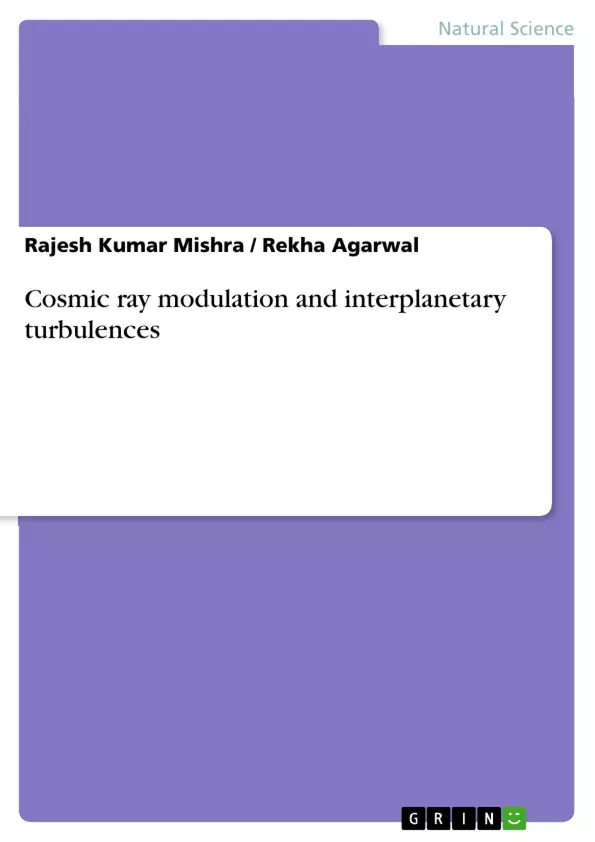A lot of efforts have been made to find out the possible origin of the ‘high amplitude anisotropic wave trains’ of enhanced diurnal variation of cosmic rays and to develop a suitable realistic theoretical model, which can explain the different harmonics in individual days. The main objective of this work is to study the first three harmonics of high amplitude wave trains of cosmic ray intensity over the period 1981-1994 for Deep River neutron monitoring station and their association with different solar and interplanetary transients. The amplitude of all the three harmonics (diurnal/semi-diurnal/tri-diurnal) of HAE events significantly remains quite high and statistically constant as compared to the annual average amplitude for majority of the events, whereas the time of maximum significantly shifts towards earlier hours for first harmonic and towards later hours for second and third harmonic as compared to the co-rotational direction for majority of the events. The occurrence of HAE events is dominant, when the value of interplanetary magnetic field (B) remains in the range (4 -10 nT); the product Ap x Dst remains negative only the ion density remains 20. It is noteworthy that the occurrence of high amplitude day is dominant during solar activity minimum years (1986-87) and solar activity maximum years (1991-92). The amplitude as well as time of maximum of the cosmic ray diurnal anisotropy is positively correlated to the sunspot numbers during HAEs.
Inhaltsverzeichnis (Table of Contents)
- INTRODUCTION
- Analysis of Data:
- Harmonic Analysis:
Zielsetzung und Themenschwerpunkte (Objectives and Key Themes)
This study investigates the high-amplitude anisotropic wave trains of cosmic ray intensity observed at the Deep River neutron monitoring station from 1981 to 1994. The main objective is to analyze the first three harmonics of these wave trains and their association with solar and interplanetary transients. The research aims to develop a theoretical model that can explain the diurnal anisotropy observed on individual days.
- Harmonics of high-amplitude cosmic ray intensity variations
- Association with solar and interplanetary activity
- Theoretical models of diurnal anisotropy
- Correlations with solar activity parameters
- Role of interplanetary magnetic field and solar wind
Zusammenfassung der Kapitel (Chapter Summaries)
- INTRODUCTION: This chapter introduces the study of cosmic ray intensity variations and the need for understanding the role of solar activity and interplanetary conditions in modulating these variations. It highlights the unusual high and low amplitude wave trains observed in cosmic ray intensity and the limitations of the co-rotational concept in explaining these phenomena.
- Analysis of Data: This chapter delves into the methods employed to analyze the data, including the use of Fourier analysis to derive the amplitude and phase of the harmonics of the daily variation in cosmic ray intensity. It explains the limitations of Fourier analysis in estimating the amplitude of the ambient anisotropy, particularly for small amplitudes. The chapter further discusses the specific methodology used for harmonic analysis, outlining the mathematical equations and parameters involved.
Schlüsselwörter (Keywords)
The study focuses on the analysis of cosmic ray intensity variations, specifically investigating the diurnal, semi-diurnal, and tri-diurnal harmonics of high-amplitude wave trains. It explores the relationship between these variations and solar activity, including sunspot numbers, interplanetary magnetic field strength, solar wind parameters, and geomagnetic activity. Key concepts include the co-rotational concept, garden-hose and anti-garden-hose directions, convection-diffusive mechanism, and theoretical models for explaining diurnal anisotropy.
- Quote paper
- Rajesh Kumar Mishra (Author), Dr. Rekha Agarwal (Author), 2023, Cosmic ray modulation and interplanetary turbulences, Munich, GRIN Verlag, https://www.grin.com/document/1430666



